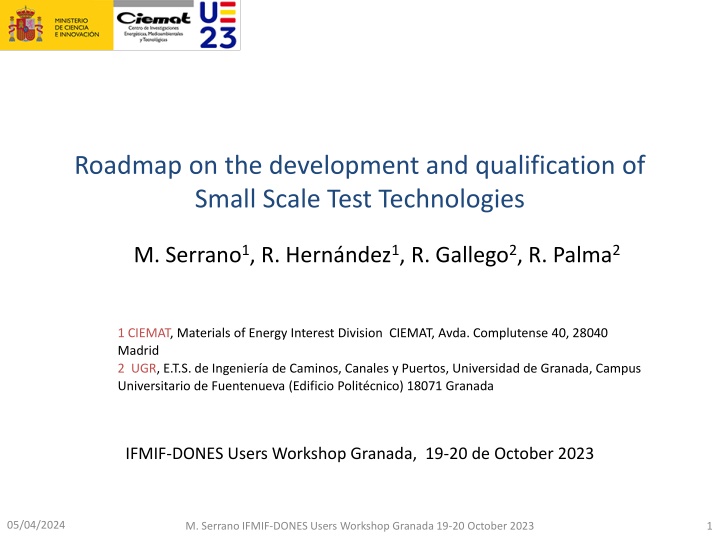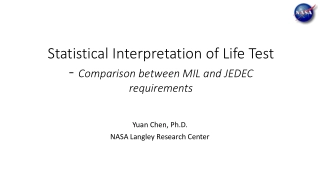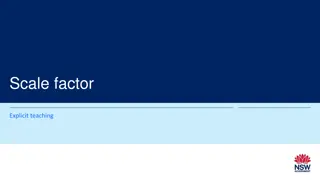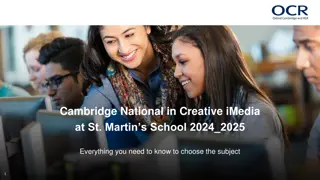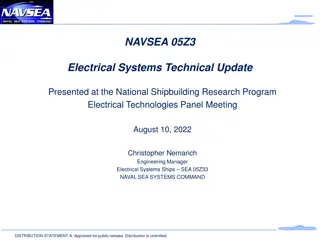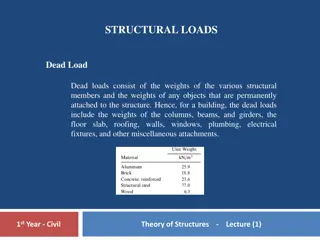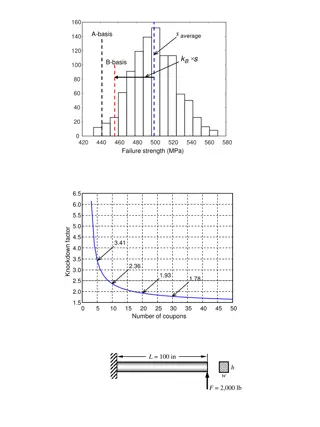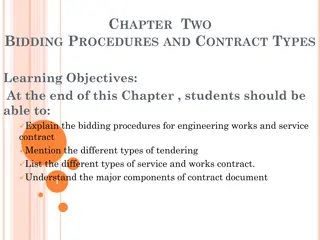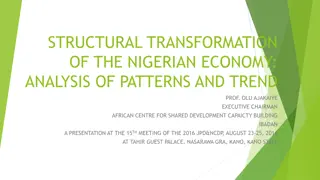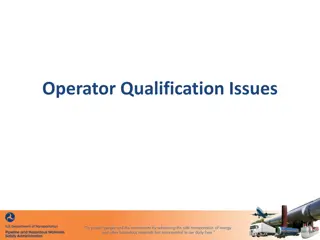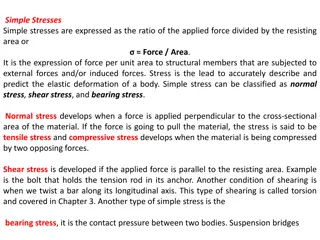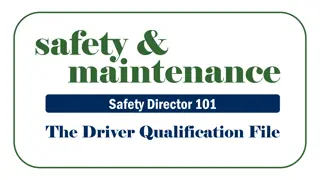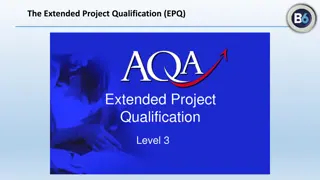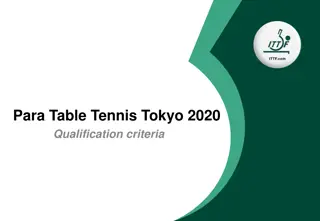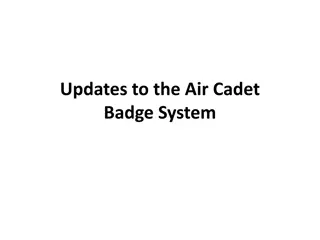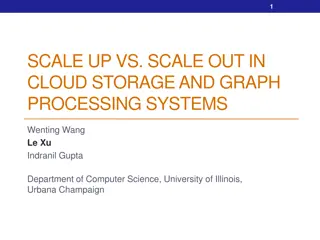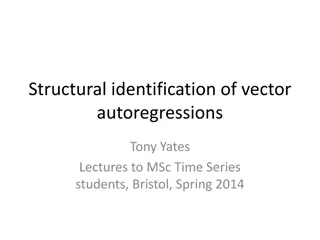Development and Qualification of Small Scale Test Technologies in Structural Engineering
Small Scale Test Technologies (SSTT) play a crucial role in determining the mechanical properties of materials used in engineering applications. This roadmap focuses on the importance of testing relevant volumes to ensure transferability to real-world structures. It discusses the need for consistent, uniform, and reproducible testing methods, especially in the context of fusion power reactors. The aim is to acquire data to accurately design and construct mechanical components for high-temperature and nuclear reactors.
Download Presentation

Please find below an Image/Link to download the presentation.
The content on the website is provided AS IS for your information and personal use only. It may not be sold, licensed, or shared on other websites without obtaining consent from the author.If you encounter any issues during the download, it is possible that the publisher has removed the file from their server.
You are allowed to download the files provided on this website for personal or commercial use, subject to the condition that they are used lawfully. All files are the property of their respective owners.
The content on the website is provided AS IS for your information and personal use only. It may not be sold, licensed, or shared on other websites without obtaining consent from the author.
E N D
Presentation Transcript
Roadmap on the development and qualification of Small Scale Test Technologies M. Serrano1, R. Hern ndez1, R. Gallego2, R. Palma2 1 CIEMAT, Materials of Energy Interest Division CIEMAT, Avda. Complutense 40, 28040 Madrid 2 UGR, E.T.S. de Ingenier a de Caminos, Canales y Puertos, Universidad de Granada, Campus Universitario de Fuentenueva (Edificio Polit cnico) 18071 Granada IFMIF-DONES Users Workshop Granada, 19-20 de October 2023 05/04/2024 M. Serrano IFMIF-DONES Users Workshop Granada 19-20 October 2023 1
Contents Some slides on introduction about small specimens Actions towards standarization Fission Fusion Non nuclear actions 05/04/2024 M. Serrano IFMIF-DONES Users Workshop Granada 19-20 October 2023 2
Why we talk about SSTT Mechanical properties are driven by the microstructure and stress state and thus relevant volume should be tested to determine properties that are independent of the specimen size to be transferred to engineering structures Transferability Materials used in engineering applications as structural components are subject to loads, defined by the application purpose. The mechanical properties of materials characterize the response of a material to loading. Mechanical properties are determined following standards, which define testing machines, specimen shapes and sizes, experimental procedures, and data interpretations. Consistent, Uniform, and Reproducible 05/04/2024 M. Serrano IFMIF-DONES Users Workshop Granada 19-20 October 2023 3
Why we talk about SSTT in IFMIF/DONES The verification of the structural components of a fusion power reactor requires design criteria developed specifically for those components at the unique conditions at which they are operated The RCC-MRx design and construction code constitutes a single document that covers in a consistent manner the design and construction of mechanical components for high temperature reactors, research reactors and fusion reactors Need to acquiring and gathering the data which describe the physical and mechanical behaviour of the material, necessary to apply the component design rules available in the RCC-MRx code Materials and Design rules have been extended in order to be applicable for nuclear components likely to operate: in creep conditions (significant creep) in irradiated conditions (significant irradiation) Mechanical data at RELEVANT irradiation conditions Key challenge for fusion reactor > main reason why IFMIF/DONES is required 05/04/2024 M. Serrano IFMIF-DONES Users Workshop Granada 19-20 October 2023 4
Why we talk about SSTT in IFMIF/DONES A standard fracture toughness specimen, with a thickness of 16 mm to be accommodated within the capsule, has a dimensions of 40 mm x 38.4 mm x 16 mm Each capsule of IFMIF/DONES offers a cuboid volume 79 mm x 39 mm x 16.5 mm (54 cm ) for specimens Reduce the dimensions of the testing specimens hardly two standard specimens should be irradiated within the same capsule Neutron flux (n/cm2/s) distribution on the horizontal cut-plane Qiu, Y. IFMIF-DONES HFTM neutronics modeling and nuclear response analyses Nuclear Materials and Energy Volume 15, May 2018, Pages 185-189 05/04/2024 M. Serrano IFMIF-DONES Users Workshop Granada 19-20 October 2023 5
Advantages of SSTT -> Small volume 05/04/2024 M. Serrano IFMIF-DONES Users Workshop Granada 19-20 October 2023 6
Challenges on the use of SSTT- > Lack of standards (for some techniques) 05/04/2024 M. Serrano IFMIF-DONES Users Workshop Granada 19-20 October 2023 7
Actions towards standarization Previous activities Nuclear Fission EURATOM funded Project FRACTESUS Nuclear Fusion EUROFUSION IAEA Towards the Standardization of Small Specimen Test Techniques for Fusion Applications CRP II Non Nuclear actions 05/04/2024 M. Serrano IFMIF-DONES Users Workshop Granada 19-20 October 2023 8
Previous activities The lack of standardization, not only for the specimen geometry but also for the testing protocol and data uncertainty analysis, is highlight in all the SSTT activities since decades Early effort for standardization on the use of SSTT for fission and fusion applications was launched by ASTM in the 80 s and a task group was thus formed under the auspices of ASTM Subcommittee E10.02 on Behavior and Use of Metallic Materials in Nuclear Systems to consider whether a set of recommended practices for individual small-specimen techniques might be useful and, if so, to write such practices. They agree to organise a serie of symposium on small-specimen testing, being the first held in 1983 in Albuquerque, New Mexico, and focused on test techniques for fusion reactors and the last one was held in 2014 in Houston. 05/04/2024 M. Serrano IFMIF-DONES Users Workshop (on-line) 26-27 September 2022 9
Nuclear Fission - FRACTESUS EURATOM funded Project FRACTESUS Fracture mechanics testing of irradiated RPV steels by means of sub-sized specimens Euratom work programme 2019-2020 GA 900014 The objective is the validation of the use of small CT specimen for the determination of the T0 transition reference temperature > Reactor pressure vessel surveillance Li, M., Chaouadi, R., Uytdenhouwen, I., & Pardoen, T. (2023). Engineering Fracture Mechanics, 290, 109486. RPV surveillance tests 05/04/2024 M. Serrano IFMIF-DONES Users Workshop Granada 19-20 October 2023 10
Nuclear Fusion - IAEA IAEA Coordinated Research Project (CRP) Towards the Standardization of Small Specimen Test Techniques for Fusion Applications (F13017) 2017-2021 to provide a set of guidelines for SSTT based on common agreed best practices on main test techniques (tensile, creep, low cycle fatigue, fracture toughness, fatigue crack growth) valid for reference structural Fusion materials (RAFM steels) to establish supporting experimental activities and to elaborate datasets and elements needed for a full standardization of the SSTT by an international authority like ASTM or ISO. Note: the standardization process itself was not part of the CRP IAEA Sehila M. Gonzalez de Vicente Rapporteurs Eberhard Diegele (independent expert) Roland Heidinger (independent expert) Shanghai Jiao Tong University KIT Osaka University QST NIFS CIEMAT UKAEA China Germany Japan Japan Japan Spain UK 05/04/2024 M. Serrano IFMIF-DONES Users Workshop Granada 19-20 October 2023 11
Nuclear Fusion - IAEA The CRP includes an expert and in-depth literature review for the tests selected that is unique in its scope addressing a wealth of tests and types of specimen. Reference guidelines have been established, following international standards, for the five different test techniques. Subsequently, they have been applied in the course of the CRP to get immediate feedback in terms of applicability and verification. Round Robin : Respective test matrices (selection of specimens, materials and common test conditions , test methodologies) were agreed Heavely affected by COVID lockdown Tensile: 375 completed at 4 labs. Creep: 20 tests completed - Master Curve: 34 completed Brittle (local) Approach: 43 completed Ductile Approach: 96 completed LCF: 147 test completed @RT, @550C - - FCG: 8 completed at 2 labs, all @RT 05/04/2024 M. Serrano IFMIF-DONES Users Workshop Granada 19-20 October 2023 12
Nuclear Fusion - IAEA IAEA Coordinated Research Project (CRP) Towards the Standardization of Small Specimen Test Techniques for Fusion Applications PHASE II (2023-2026) To provide the bases for the standardization of SSTT specimens making them available for their use in Fusion material irradiation facilities. This includes: (a) to provide a set of guidelines for SSTT based on common agreed best practices on main test techniques (tensile, creep, low cycle fatigue, fracture toughness, fatigue crack growth) valid for reference structural Fusion materials (RAFM steels); (b) to establish supporting experimental activities and (c) to elaborate datasets and elements needed for a full standardization of the SSTT by an international authority like ASTM or ISO. IAEA [Sehila M. Gonzalez de Vicente] Rapporteurs Eberhard Diegele (independent expert) Roland Heidinger (independent expert) Comision Nacional de Energia Atomica SCK CEN Shanghai Jiao Tong University KIT Centre for Energy Research Osaka University QST NIFS CIEMAT National Nuclear Laboratory UKAEA Oxford Sigma University of California, Berkeley Argentina Belgium China Germany Hungary Japan Japan Japan Spain UK UK UK USA 1st Research Coordination Meeting 30 January to 01 February 2023 IAEA Headquarters, VIC, Vienna, Austria 05/04/2024 M. Serrano IFMIF-DONES Users Workshop Granada 19-20 October 2023 13
Nuclear Fusion - EUROFUSION HE EUROFUSION 2021-2024 H2020 EUROFUSION 2015-2020 transversal activity between ENS / DONES and MAT (DEMO: EDDI / SDQ / HHFM / IRRAD; TBM), RAFM, CuCrZ, W Tensile, LCF, FT Roadmap for standarization 05/04/2024 M. Serrano IFMIF-DONES Users Workshop Granada 19-20 October 2023 14
Non-nuclear actions Characterize additive manufactured materials, especially for metal-based technologies. [J. Dzugan et al mainly] high costs (raw material), high number of samples needed to fully characterize a batch of material. traceability at various locations and anisotropy ASTM WK83107 (see later) Dzugan, J., Seifi, M., Prochazka, R., Rund, M., Podany, P., Konopik, P., & Lewandowski, J. J. (2018). Effects of thickness and orientation on the small scale fracture behaviour of additively manufactured Ti-6Al-4V. Materials Characterization,143, 94-109. Li, Y., Kraj k, T., Podan , P., Vesel , J., & D ugan, J. (2023). Thermal stability of dislocation structure and its effect on creep property in austenitic 316L stainless steel manufactured by directed energy deposition. Materials Science and Engineering: A, 873, 144981. 05/04/2024 M. Serrano IFMIF-DONES Users Workshop Granada 19-20 October 2023 15
Non-nuclear actions Data-driven evaluation of mechanical properties - high-throughput materials evaluation techniques Heckman, N. M Daniel S. Gianola Heckman, N. M., Ivanoff, T. A., Roach, A. M., Jared, B. H., Tung, D. J., Brown-Shaklee, H. J., ... & Boyce, B. L. (2020). Automated high-throughput tensile testing reveals stochastic process parameter sensitivity. Materials Science and Engineering: A, 772, 138632. Gianola, D. S., della Ventura, N. M., Balbus, G. H., Ziemke, P., Echlin, M. P., & Begley, M. R. (2023). Advances and opportunities in high-throughput small-scale mechanical testing. Current Opinion in Solid State and Materials Science,27(4), 101090. 05/04/2024 M. Serrano IFMIF-DONES Users Workshop Granada 19-20 October 2023 16
MAT-T.01.03-T017 D001 Interaction with regulatory body (URG/CIEMAT) Roadmap under development within EUROFUSION WPMAT-EDDI-SSTT ASTM route was selected as some ongoing activities on SSTT already exists EUROFUSION PILOT RUN: Objectives Organization Labs, Test method and protocol Time table 05/04/2024 M. Serrano IFMIF-DONES Users Workshop Granada 19-20 October 2023 17
Standarization route www.astm.org ASTM New Standard Activity Determine if new standard is needed Identify key stakeholders Committee E10 Nuclear Applications or Committee E08 Identify Committee and Subcommittee ASTM Stimulates participation from outside of task group Register a Work Item Balloting Final publication 05/04/2024 M. Serrano IFMIF-DONES Users Workshop (on-line) 26-27 September 2022 18
Standarization route An interlaboratory interlaboratory study (ILS) a multi lab study done for the specific purpose of producing data that will be used to develop a Precision & Bias statement and Research Report in order to demonstrate the expected variability of a test method. ASTM E691 19 An American National Standard Standard Practice for Conducting an Interlaboratory Study to Determine the Precision of a Test Method study (ILS) is Where numerical data have been generated to establish the precision and bias of a test method, a research report research report is required ASTM Work Item 1. Scope 2. Referenced Documents 3. Terminology 3.1 Definitions 4. Significance and Use 5. Apparatus 6. Test Specimens 7. Procedure 8. Post-Test Examination 9. Report 10. Precision and Bias (MANDATORY) 11. Keywords o 13. Pilot Run 13.1 Before investing laboratory time in the full scale ILS, it is usually wise to conduct a pilot run with only one, or perhaps two, material(s) to determine whether the test method as well as the protocol and all the ILS procedures are clear, and to serve as a familiarization procedure for those without sufficient experience with the method (see 9.3). The results of this pilot run also give the task group an indication of how well each laboratory will perform in terms of promptness and following the protocol. Laboratories with poor performance should be encouraged and helped to take corrective action. 05/04/2024 M. Serrano IFMIF-DONES Users Workshop (on-line) 26-27 September 2022 19
MAT-T.01.03-T017 D001 Interaction with regulatory body (URG/CIEMAT) EXAMPLE OF AN EXISTING WK ON SSTT (TENSILE) ASTM ongoing activities on SSTT Subcommittee E28.04.01 (Task Group on Small Specimens in E8/E8M) to publish an annex providing guidelines to uniaxial tensile testing of subscale geometries WK83107 Additional efforts are underway through ASTM Subcommittee F42.01 (New Test Method for Additive Manufacturing Test Artifacts Miniature Tension Testing of Metallic Materials), STILL NOT APPROVED ASTM WK83107 . Rationale There are situations where standard ASTM E8/E8M specimens are too large. These are often because a particular part or component from which the test specimen is to be excised is small. Excising miniature specimens is a logical conclusion, however there are some important considerations that need to be addressed. Tensile test procedures and properties can be dramatically affected by specimen size. This annex is intended to address the problems that can arise from testing miniature tensile specimens. ASTM Interlaboratory Study to Establish Precision Statements for Tensile Testing of Miniature specimens using ASTM E/E8M 05/04/2024 M. Serrano IFMIF-DONES Users Workshop Granada 19-20 October 2023 20
MAT-T.01.03-T017 D001 Interaction with regulatory body (URG/CIEMAT) TO BE DISCUSSED at Next WPMAT-EDDI SSTT meeting 2023 Pilot run on tensile properties Tensile properties at room temperature First draft of the ASTM WK including ILS ILS results submitted to the ASTM ILS section for approval ASTM Committe selection ILS on tensile properties at room temperature Pilot run on high temperature tensile 2024 Tensile properties draft (room temperature) Pilot run on fracture toughness Tensile properties at room temperature Draft standard in the ASTM format Ballotting of the draft standard 2025 05/04/2024 M. Serrano IFMIF-DONES Users Workshop Granada 19-20 October 2023 21
MAT-T.01.03-T017 D001 Interaction with regulatory body (URG/CIEMAT) PLANNED ACTIVITIES in 2023: PILOT RUN Send material to Labs (SCK-CEN) Finish protocol and test method (Task Group) Follow draft of AX1 for E8/E8M balloting 05/04/2024 M. Serrano IFMIF-DONES Users Workshop Granada 19-20 October 2023 22
MAT-T.01.03-T017 D001 Interaction with regulatory body (URG/CIEMAT) Pilot run on tensile properties at room temperature 05/04/2024 M. Serrano IFMIF-DONES Users Workshop Granada 19-20 October 2023 23
MAT-T.01.03-T017 D001 Interaction with regulatory body (URG/CIEMAT) Definition of tensile geometries EU FLAT Modification of DONES geometry to fulfil Standard requirements on proportionality SCKCEN ROUND Same geometry used for EUROFER97 irradiation campaigns SS-J3 Extensilevly used, e.g. IAEA CRP on SSTT 05/04/2024 M. Serrano IFMIF-DONES Users Workshop Granada 19-20 October 2023 24
MAT-T.01.03-T017 D001 Interaction with regulatory body (URG/CIEMAT) Finish protocol and test method (Task Group) 05/04/2024 M. Serrano IFMIF-DONES Users Workshop Granada 19-20 October 2023 25
Summary Different actions towards the standardization of small specimens to determine mechanical properties are presented (past and present) Within nuclear fusion two main action are already run in parallel and connected: IAEA Coordinated Research Project (CRP) Towards the Standardization of Small Specimen Test Techniques for Fusion Applications MAT-T.01.03-T017 D001 Interaction with regulatory body (URG/CIEMAT) First step for the standardization of SSTT has been launched within EUROFUSION WPMAT-EDDI-SSTT 2023 Pilot run on tensile properties at room temperature launched 05/04/2024 M. Serrano IFMIF-DONES Users Workshop Granada 19-20 October 2023 26
